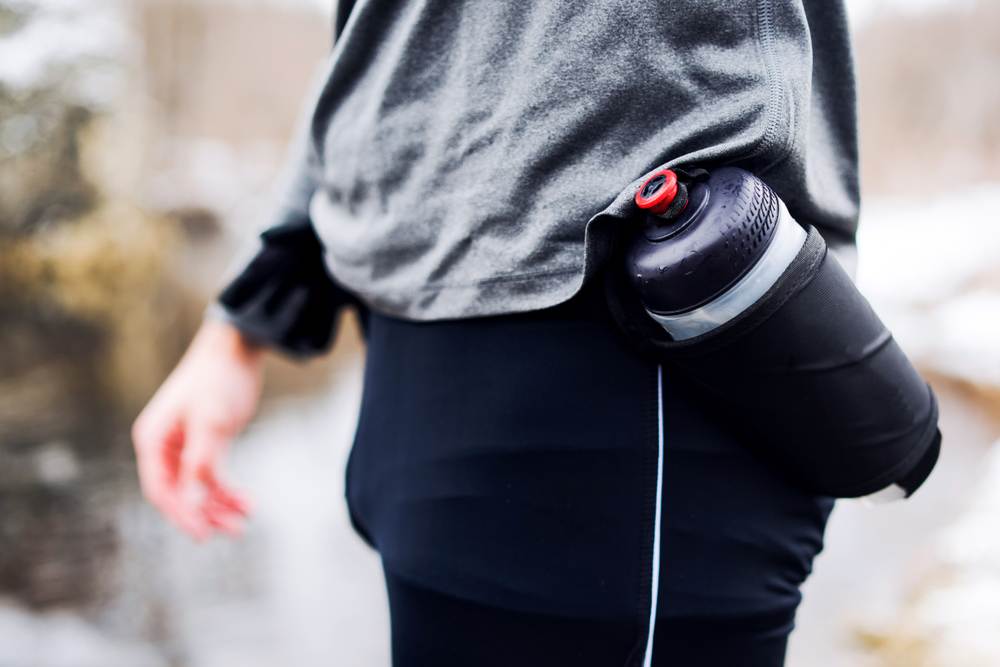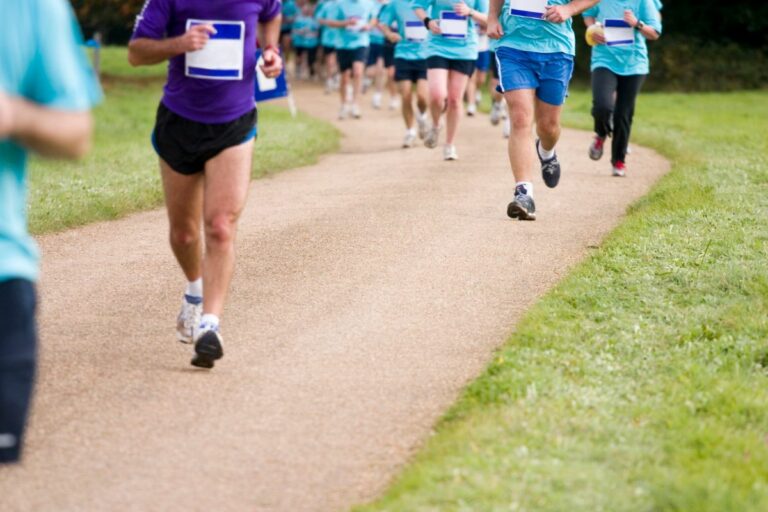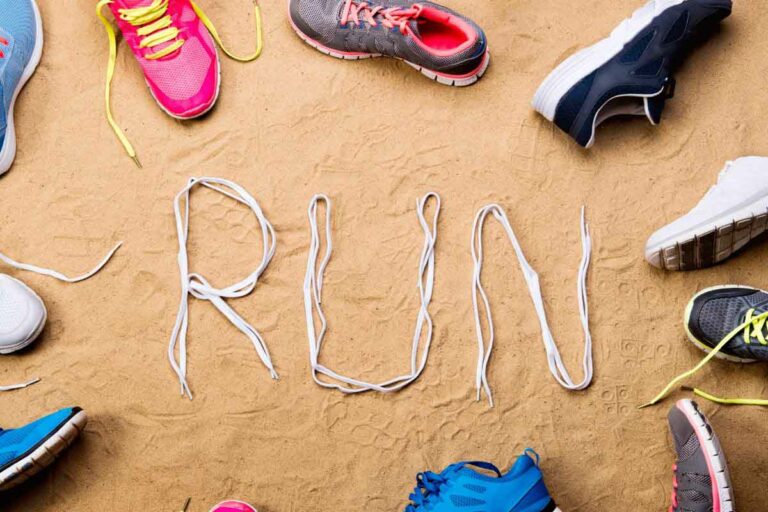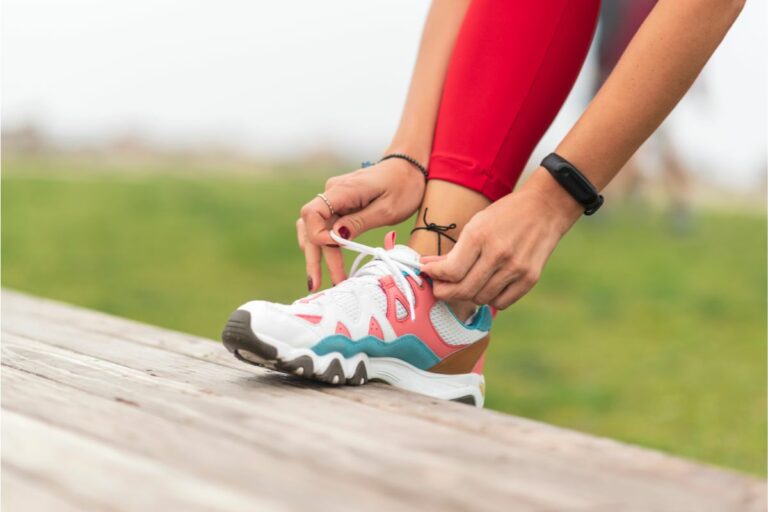Best Way to Carry Water While Running? Make Long Runs More Enjoyable

Carrying water allows you to run LONGER without stopping to drink. This means you can SAVE time and energy during long runs. But, you don’t want to be hindered by holding a water bottle in your hand.
It is essential to stay HYDRATED when exercising, but how can you not become weighed down by a water bottle? Yes, carrying water can be annoying.
But it doesn’t have to be a HINDRANCE.
This article discusses how to carry water while running with a waist belt, hydration vest, hydration backpack, and thigh holster.
Note that waist belts, hydration vests, and backpacks are great options for carrying your phone and other valuables while running as well.
You don’t always have to carry water on a run:
- In general, you can run for an hour in good conditions without drinking.
- You won’t lose so much fluid that you need to take a water bottle on the run.
- You can hydrate yourself before and after the exercise.
When to carry water on a run:
- Taking water with you is a good idea for runs that take more than an hour.
- If it is hot or running a more strenuous run, you should carry water with you.
How much water to carry while running?
- A standard 500 ml water bottle will see you through if you are heading on a shorter run.
- But if you are heading out for the day on the run, you will need to be prepared and make sure that you have enough water to sufficiently hydrate you.
How much to drink during exercise?
- In general, drink 4 to 6 ounces (1.2 to 1.8 dl) of fluid every 20 minutes during a run.
How to Carry Water While Running
Avoid dropping your bottle or having it slip out of your hands with these tips on how to carry water while running.
1. Running Waist Belt With Water Bottle Holders

Waist belts are an effective way to carry water as you can to have your hands free in case you fall and to keep you properly balanced.
Carrying water around your WAIST won’t cause any problems during your run. You won’t even be able to tell that it is there.
You can choose between a waist belt that has holders for either 1 or 2 bottles depending on your preference.
If you are heading out for a long run, having 2 bottle holders will ensure that you have enough water to keep you hydrated.
Another benefit of having a waist belt with 2 bottle holders is that the belt is equally balanced and won’t slip down one side.
The way you position the belt around your waist is crucial as you don’t want the belt to SLIDE down.
If you have a belt with 1 bottle holder, it might be good to POSITION the bottle either on the front of your stomach or in the middle of your lower back.
This will help keep your sides free, so your arms can move freely without hitting the bottle.
2. Hydration Vest With Bladder or Water Bottles

Using a hydration vest will make sure that your arms are free, and there is no danger of the bottles getting in the way of your arm movements, either.
There are 2 types of hydration vests to choose from:
The bladder hydration vest comes with a HOSE that you drink out of so you can always keep your hands free.
Most bladder hydration vests have a capacity of 2-3 liters. You don’t have to worry about running out of water as chances are, on a shorter run, you won’t drink the whole bottle.
These vests are fantastic if you want to remain undistracted from your run.
Bottle hydration vests come with sleeves to securely keep your bottles in so they don’t fall out during your run.
Usually, the bottle sleeves are on the front of the vest so you can easily access your water when you need and you don’t have to take the vest off.
3. Hydration Backpacks
Using a hydration backpack is similar to a hydration vest, except the water will be on your back instead of your front.
Hydration backpacks come with straps on the chest and arms. That way you can make sure that it is tight on your body. You don’t want it to interfere with your posture or hit your back with each stride.
Most hydration backpacks come with a hose. You don’t need to take the gear off to rehydrate. Just sip water from the hose when you run.
You can easily access your water even on tougher terrain by having a hose.
4. Thigh Holster
A thigh holster, or a drop leg water bottle holster, can be used to carry a water bottle when walking and jogging, and it allows you to keep your hands free.
Most thigh holsters only have space for 1 bottle, as 2 would be too heavy on the thigh and would potentially slip down your leg when running.
The thigh holster needs to be tight enough to stay up when running but not too tight that it hurts your leg.
Some runners enjoy using thigh holsters to carry their water as the water can act as a weight when running and help strengthen your legs.
You can also easily switch legs if you want to use the bottle as a weight and further train both legs.
Final Thoughts
In conclusion, there are various ways to carry water when running if you want to keep your hands free.
Using any of these solutions will help you feel more unrestricted when you run.
Your run is not hindered by having to hold your water bottle and risk it dropping or slipping out of your hands.
When using hydration vests and backpacks, it is best to use a hose to remain focused on your run. It helps you stay hydrated without constantly stopping for water.
Waist belts and thigh holsters are a great way to ensure that your water is out of your way. However, you will still have to slow down or stop to make sure you have securely fastened the bottle before continuing.
There is no excuse to not stay hydrated when running, as it is essential for your health.
With these tips, you can stay hydrated while solely focusing on your running.






